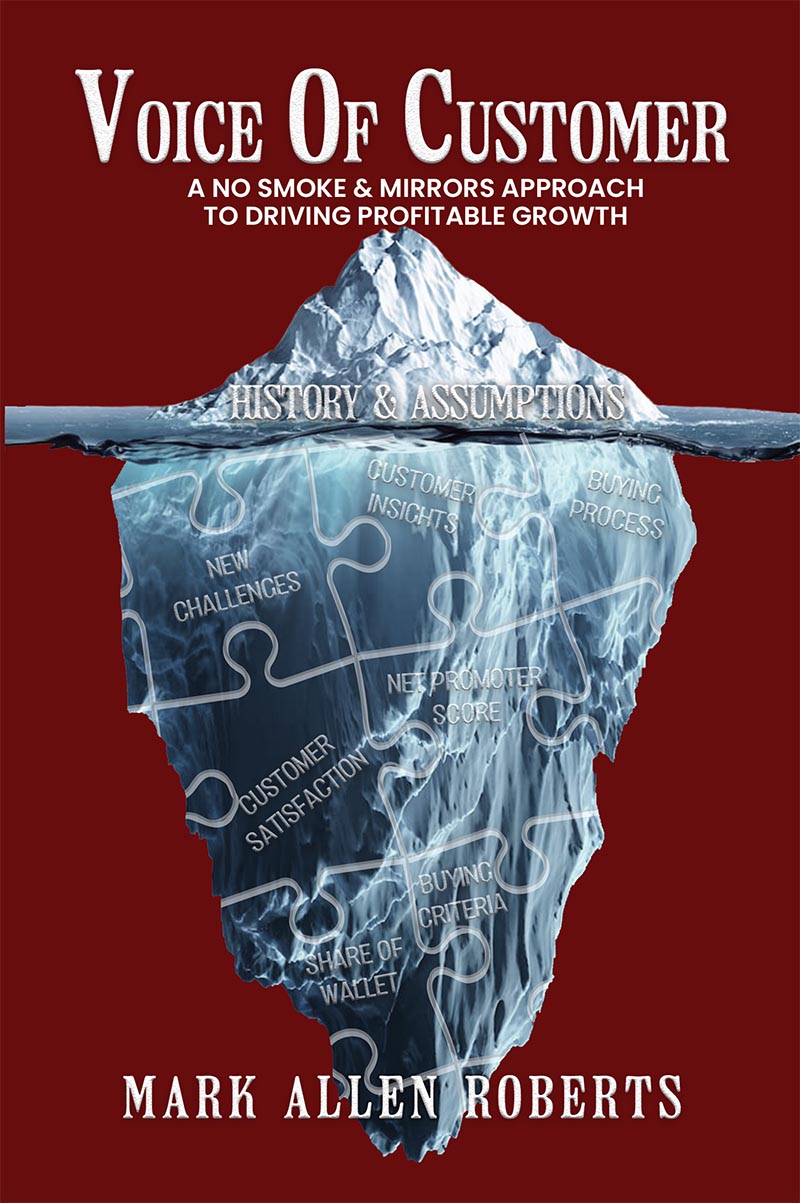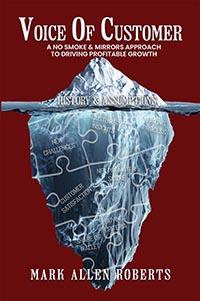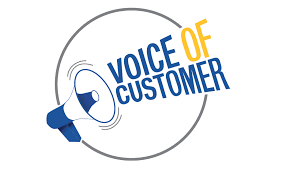Developing a strategy without customer insights is malpractice. In today’s competitive business landscape, having a deep understanding of your customers is the foundation for sustained growth and success. With a clear comprehension of customer behaviors, needs, criteria, and expectations, businesses can better tailor their offerings and strategies, satisfy customers, and drive profits. Think about how much your business has changed since the pandemic. We must clearly understand how our customer’s businesses have changed too and help them solve the challenges and problems they face today. This article delves into the nuances of conducting effective customer research, the limitations of relying solely on surveys, the potential of Voice of Customer (VoC) interviews, and the art of transforming these insights into actionable, growth-driving strategies.
The Limitations of “Surveys Slapping” Your Customers
One frequent approach in customer research is the widespread use of surveys, or, as critics argue, “survey slapping.” The term refers to the propensity of businesses to flood their customers with an avalanche of surveys to gather as much data as possible. This method, however, has severe limitations. Surveys tend to confirm and validate existing assumptions and hypotheses by their design rather than unveil new, transformative insights. They’re akin to a rear-view mirror, reflecting what you already know, instead of a telescope, that allows you to explore the unknown and anticipate the future. Another challenge is the response rate ( often meager) and how much thought went into quickly completing a survey compared to having a phone interview.
The Essentials of a Good Survey
To be fair, surveys are not entirely devoid of value. If designed appropriately, they can offer valuable quantitative data. The key is to start with a clear objective and a defined target audience. Questions should resonate with this audience and be simple, clear, and straightforward. A survey that feels like a taxing exam or a winding maze can lead to early dropouts or distorted responses. Just to remind you, the goal is to make the process smooth and unintrusive for the respondent.
The Power of Voice of Customer Interviews
As I share in my popular eBook on leveraging the voice of customer interviews, Voice of Customer (VoC) interviews are a treasure trove of insights waiting to be discovered. They delve deeper into customer perspectives, unlike surveys which often scratch only the surface. Let’s explore the immense potential and the best practices of VoC interviews.
What Is Voice of Customer Interviews?
VoC interviews refer to the process of engaging customers in one-on-one conversations to gain an understanding of their experiences, needs, preferences, and pain points. These interactions could occur in person, over the phone, or through video conferencing. They allow businesses to move beyond the typical yes-or-no responses of a survey and explore the ‘why’ behind customer behavior. This article will share the insights you will gain and how to leverage these insights to drive explosive growth.
Project Kick-off
The question design stage in our process is so critical. We design open-ended questions that enable the interviewees to share their thoughts and expand deeper on key topics. We also want the results to be statically significant. Some of the questions we will ask your team include: How many active customers do you have? How many unique product or service divisions do you have? How many inactive clients do you have? How many contacts do you have with each customer? Once we have your data, we will share the number of interviews we need to complete to make our results statically significant.
Benefits of Interviewing Customers
VoC interviews provide several advantages that other research methods may lack:
Depth of Information
Interviewing customers provides a depth of information that is hard to match. These conversations can reveal why customers make certain choices, underlying motivations, and emotional responses – aspects often missed by other research methods.
Flexibility
An interview is an interactive conversation, allowing the interviewer to ask follow-up questions based on the customer’s responses. This level of flexibility enables businesses to probe deeper into issues or ask for clarifications, leading to more valuable insights.
Discover Unexpected Insights
Surveys and other research tools often require knowing what you’re looking for. VoC interviews, on the other hand, are open-ended and can uncover unexpected insights that can prove pivotal for your business. In one case, we interviewed the customers of one of our metal manufacture and assembly companies. In the interview, one of their top three customers shared they were not happy the salesperson did not quote a recent RFQ. We asked more questions about the work, and the job was well within our client’s capabilities. We wondered if it would be ok if the CEO called her back, and she agreed. That short call turned into a $600,000 order. The salesperson was correct. They had never done a job like this, but the salesperson needed help understanding that the customers’ needs were well within the manufacturer’s capabilities.
Discover Key Customers Preparing to Defect
When we design our questions to gather the insights your leadership team needs, we also weave in customer satisfaction and net promotor score questions. We often are provided a list of customers by sales declining so we can deliver insights by key tiers of customers, A, B, and C accounts. We were helping a vast machine shop in one project and discovered that one of their top 3 customers was preparing to defect. In the interview, the decision maker shared their concerns and that they have already started moving a sizeable chunk of business to another machine shop. Our team is trained to communicate quickly with clients when we hear something like this. To the credit of the CEO and VP of sales, they contacted the account, flew to their location within 48 hours, and worked out the client’s issues. Not only did they save the business, they were introduced to another company’s division, and the machine shop’s volume with this client grew by over 40%. The time to save unhappy customers is before they defect.
Discover The Language of the Customer
Each call is recorded and transcribed unless the customer is in a region where this is not permissible. We capture the words and phrases customers use and how they describe problems. Often the language the client uses and searches for differs from the language manufacturers and service providers operate. One client had an innovative technology that mitigated odors in the air in industrial applications like wastewater treatment plants, breweries, and several odors-producing farming applications. As we interviewed clients in industrial processing and wastewater, the customers kept using “nuisance odor.” This was not a term on our websites, ad words, or campaigns. We added nuisance odors to our website, wrote blogs about mitigating nuisance odors, and web traffic increased significantly in 60 days. That minor change helped a large wastewater odor mitigation project in the Netherlands find our company, which became the largest installation to date.
Discover New Problems That Turn into Successful New Products
Markets and customers change all the time. When we conduct voice-of-customer interviews, we are listening for unresolved problems. When one of our trained interviewers discovers an unresolved issue, we capture as much detail as possible about the problem and the requirements of a product to solve this problem. We share the information with product management and marketing when we discover unmet needs and requirements. These insights often turn into successful new products and services.
Discover New Markets for Existing Products
Our team contacts and interviews your clients. We often find new clients in new markets using a current product in new ways. We focus on speaking with end-users and clearly understand their use case. We often discover new markets that value our existing products and services.
Discover Needed Process Improvements and Training Needs
Our questions on customer satisfaction often result in lengthy discussions we did not anticipate when a customer is unhappy. Rarely is the product or price concern, but the main issues are how the customer was served and the skill level of the person doing them. Voice of customer research provides excellent insights into dated and broken processes and much-needed product and skills training.
Discover Why You Did Not Win a Large Order
As a separate service, we provide loss mitigation and win-loss analysis. However, why customers buy and why they don’t often bubbles to the surface when we speak with them. The CRM entry read: “Customer went with cheaper alternative product from our competitor.” However, when we interviewed the decisionmaker, we learned price was third on why they did not buy from my client. The main reason they did not believe was they felt my client’s salesperson did not clearly understand the problem and therefore did not trust the solution they recommended. Second, the salesperson took over ten days to send the quote when the competitor provided a quote the next day.
In another project, we called the largest customer for our client. They sent many tasks to our client to quote, but their close rate was under 20%. Our client’s CEO wanted to know how to increase their close rate to 50% or more. What we discovered were two insights. First, the client said no cleaning certification documents were provided in the quotes. Second, my client’s competitors were quoting in 48 hours, and my client’s average quote turnaround was 15 days. The shame was my client was cleaning the parts before shipment but was unaware of a needed document in the quote. When my client provided the documents and quotes in 24 hours, their close rate jumped to over 60%
Discover Your Share of Wallet at Large Key Accounts
One question CEOs and business owners often want to ask is our share of the buyer’s wallet. In other words, do we have over 70% of the volume in a particular category or 10%? When we ask salespeople, we often hear we spend most of the dollars on a specific product category. However, when we interview your large clients, the number typically is between 20% and 35%. Just imagine how your sales and marketing strategy might change if you thought you had a 60% share of wallets but discovered after the voice of customer research you had 23%.
Best Practices for Conducting Voice of Customer Interviews
While the benefits of VoC interviews are evident, their effectiveness depends on your approach. Here are some best practices to consider:
Prepare but be Open
Before the interview, prepare a guide or a list of topics to cover. However, remain flexible during the interview to explore exciting points brought up by the customer.
Use Open-Ended Questions
Open-ended questions allow customers to express their thoughts freely rather than restricting them to predefined options.
Create a Comfortable Environment
Encourage honest feedback by assuring customers that their responses will be used to improve their experience and that there are no right or wrong answers.
Listen Actively
Pay close attention to the customer’s words, as well as their tone and non-verbal cues. Try to understand their emotions and the reasons behind their feedback.
Do Not Have Sales Conduct Voc Interviews
Salespeople should be selling. Your salesperson is the worst person to conduct Voc interviews. First, they have a relationship with the customer, and the customer may be less than 100% truthful for fear of damaging the relationship. Second is bias; the salesperson has preconceived notions about the customer and their business and will detract from gaining insights. Third, if there are issues with the salesperson’s skills or service level impacting customer satisfaction, will the salesperson report them to you? And last, salespeople sell. If a salesperson conducts Voc work and hears a problem, they jump into sales mode. Once this occurs, the customer being interviewed feels this is some trick and stops sharing the insights you are hungry for.
Gather All Data and Determine Five to Ten Key Actionable Insights.
Although the interviews often have unique conversations, we must answer the key questions our clients want and need to build their strategy. After completing the interviews, we compile all the data and look for five to ten actionable insights. We develop an executive brief and share what we learned and the actionable insights discovered. We collaborate with our clients, provide recommendations based on the data, and help them develop an action plan. Our plan reviews the understanding, what we plan to do, who will do it, and when.
Act on the Insights Discovered
You just invested with our team to interview and understand your current customers’ level of satisfaction and your net promotor score, and we gathered answers to the questions you wanted to improve your strategic plans. Now we must act on those insights. Often, we prepare a customer-facing document for our clients, thanking them, sharing what we learned, and sharing our plans to work on the information we shared. This process will deliver the ROI that many of our clients experience of 10X to 50X their investment. We provide consulting and coaching to help the action plans have key thrusts with smart goals and often train and coach the team members executing them.
Understanding and Improving Customer Satisfaction
Customer satisfaction measures how well a product or service experience meets or exceeds customer expectations. One of the most widely used metrics for gauging this is the Net Promoter Score (NPS). NPS measures the willingness of customers to recommend a company’s products or services to others.
A critical determinant of NPS is the overall customer experience, so businesses must enhance the quality of their offerings, the efficiency of their customer service, and the entirety of the customer journey. One of the leading influencers of your NPS score is your company culture, as I shared in my book: Driving Explosive Growth.
Strategies to boost customer satisfaction and NPS can include:
- Soliciting and acting upon customer feedback.
- Training customer service personnel to be empathetic and responsive.
- Continuously evaluating and refining products and services.
- Training sales to take a consultative solution based sales approach.
If we find a meager score, we assess the all-team members who are customer-facing and then deliver training to improve their skills. This ensures the customers receive the best overall service experience possible.
Adapting to Customer Evolution and Future Challenges
Businesses are not static entities—they evolve, pivot, and adapt. The same is true for their customers. Businesses must understand their “share of wallet”—the proportion of a customer’s total spending captured by a particular business, as discussed above. Once we have this data, we develop key account growth plans to capture a more significant share of purchase dollars.
In this era of rapid change and uncertainty, businesses must also be adept at identifying and addressing new customer challenges. This requires staying updated on market trends, technological advancements, and consumer behavior and preferences shifts. Several of our clients ask we conduct Voc interviews many times yearly to compare the results and identify trends.
Transforming Insights into Growth Strategies
Developing your strategy to grow your business without customer insights is malpractice. You need current customer feedback to take an inward-facing approach to strategy development. Our strategic plan will only suit your teams’ existing customer and market knowledge. Teams often share their “gut and intuition,” not customer-specific data. Customer insights can be a potent fuel for growth, provided they are translated into actionable strategies. Businesses should analyze their customer research findings to identify growth opportunities. This might involve launching new products or services, revamping customer service strategies, training customer-facing teams, or changing marketing tactics.
Successfully implemented, these strategies can result in substantial growth in revenue and profits. However, this necessitates a willingness to truly listen to your customers, adapt to their changing needs, and occasionally take calculated risks.
Conclusion
In conclusion, effective customer research is far from a mere administrative chore. It is a fundamental pillar that underpins a successful growth strategy. By understanding customers better and allowing these insights to shape their strategies, businesses can enhance customer satisfaction, navigate market changes, and achieve remarkable profit growth.
Start harnessing the power of customer insights today, and let your business ride the wave of growth tomorrow.
Let’s go ahead and schedule a to discuss gathering customer insights from your current customers and how to reengage with inactive customers to drive explosive growth in revenue, profits, and shareholder value.








